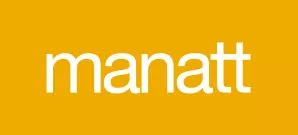- within Real Estate and Construction topic(s)
I. Introduction and Overview
On May 18, 2023, the Centers for Medicare & Medicaid Services (CMS), in consultation with the U.S. Department of Education (DOE), released new guidance to support state Medicaid and Children's Health Insurance Program (CHIP) agencies (SMAs), state education agencies (SEAs),1 and local education agencies (LEAs)2 in working together to deliver covered Medicaid and CHIP services in school-based settings. These school-based services (SBS) are critical health and health-related services provided to students and their caregivers in the school setting, and can be covered by Medicaid and CHIP. This guidance, Delivering Services in School-Based Settings: A Comprehensive Guide to Medicaid Services and Administrative Claiming, was accompanied by a CMS Informational Bulletin (CIB) summarizing the guidance for states and announcing the launch of the joint CMS and DOE SBS Technical Assistance Center. 3
With this new guidance, CMS highlights that schools can and should play a critical role in providing health care services to children and youth and seeks to make it easier for them to do so. Medicaid and CHIP have a powerful role to play here, given that 42.1 million children, or over half of all children in the United States, are enrolled in Medicaid and CHIP.4 The guidance focuses on:
- New reimbursement rates and payment flexibilities, including the option to pay higher reimbursement rates for services provided in schools.
- New options for interim or monthly payments to schools.
- Inclusion of early childhood educational settings and best practices in service delivery to young children, including mental health consultation
- Encouragement to states to expand the role Medicaid and CHIP can play in financing health care services for all Medicaid- and CHIP-enrolled students, not only those students who receive special education services.
- New flexibility for setting-specific provider types.
- Emphasis on the ability to cover the full cost of outreach and enrollment activities for Medicaid and CHIP, regardless of the share of children who ultimately are found eligible for these programs.
- Ways to use CHIP Health Services Initiatives (HSIs) for SBS, including for substance use prevention and harm reduction initiatives.
This brief summarizes CMS' new guidance and highlights implications of the guidance for state agencies and local partners. The summary is tailored to meet the needs of SMAs, SEAs and LEAs to help demystify reimbursement and funding opportunities for SBS and support providers and advocates and anyone else with an interest in SBS.
Specifically, this brief provides:
- Clarity about the role that Medicaid and CHIP can play in schools (see Section II).
- Background and context on the role of Medicaid and CHIP financing for SBS, how services have previously been provided in schools to children and youth enrolled in Medicaid and CHIP, and how that has changed over time (see Section III).
- How services must be delivered in schools in order to comply with Medicaid and CHIP rules (see Section IV).
- A deep dive on the financing opportunities detailed in the CMS guidance that support SBS for children and youth enrolled in Medicaid and CHIP (see Sections V–VIII).
- Appendices collecting CMS' sub-regulatory guidance, as well as a list of acronyms (see Section X).
II. Important Role That Medicaid and CHIP Play in Schools
Schools, early childhood settings and LEAs are vital places to help support children and their families, providing children and youth with access to important health care services on-site. SBS can encompass a wide range of services, including preventive services (e.g., immunizations, screenings); behavioral health services (e.g., mental health and substance use disorder (SUD) services); physical and occupational therapy; and disease management for chronic diseases (e.g., obesity, asthma). Providing these services on-site limits disruption to caregivers' work schedules or concerns with transportation to a health care facility, increases access overall and reduces the stigma of accessing certain services, such as behavioral health services.
Schools and early childhood settings can also serve as a catalyst for children eligible for Medicaid and CHIP to access primary and preventive services, promoting health and educational equity in the school setting. Providing services to children in the school setting may yield positive downstream effects, such as increases in school attendance, reductions in health insurance churn for children and their families, and reductions in emergency room visits.5 Schools can also serve a navigator role, helping children and youth obtain Medicaid and CHIP coverage, access health care services, and connect with community-based organizations and supports.
Schools already are under extraordinary pressure to fulfill a range of educational and community imperatives, making it vital that the process of using Medicaid and CHIP to finance SBS is as simple as possible. Historically, it has been complex and daunting to use Medicaid and CHIP to cover SBS for several reasons, including (1) schools and SMAs use different topic-specific jargon; (2) the funding requirements for Medicaid and CHIP and for education are complex; and (3) coverage varies by state because of the discretion SMAs have in determining what SBS are covered by Medicaid and CHIP and how they are financed. The complexities of billing systems and state financing arrangements can also make it administratively challenging for schools and LEAs to provide or contract for Medicaid and CHIP-covered SBS, often disincentivizing smaller or more rural LEAs from participating.
To view the full article click here
Footnotes
1. Also known as state departments of education.
2. LEAs are defined as "a public board of education or other public authority legally constituted within a state for either administrative control or direction of, or to perform a service function for, public elementary schools or secondary schools in a city, county, township, school district, or other political subdivision of a state, or for a combination of school districts or counties as are recognized in a state as an administrative agency for its public elementary schools or secondary schools." See 34 C.F.R. § 303.23(a)here.
3. The CMS guidance was required of the Bipartisan Safer Communities Act.
4. CMS. March 2023 Medicaid & CHIP Enrollment Data Highlights. Available here.
5. California School-Based Health Alliance. Top 10 Benefits of School-Based Health Centers. Available here.
The content of this article is intended to provide a general guide to the subject matter. Specialist advice should be sought about your specific circumstances.








